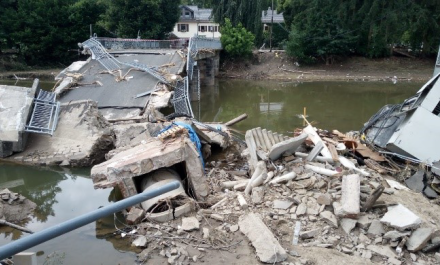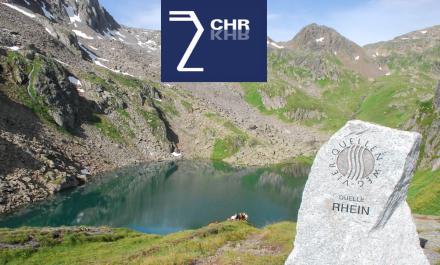Annual report of the CHR 2021 published!
Annual report of the CHR 2021
Code

Report of the 89th meeting of the CHR
Code

The CHR members met online and discussed the agenda plus documents. On day 1 we all said good-bye to our CHR representative of the Land Hessen, Dr. Gerhard Brahmer.
Federal Ministry of Agriculture and Forestry, Climate and Environmental, Regions and Water Management , Republic of Austria
The distribution of water is due to big spatial and time differences. In order to better understand the hydrological processes of the water cycle and to define those in numbers, the hydrography of Austria observes rainfall, discharge of our waters and groundwater. Division I/3 coordinates the actions of hydrography in Austria and publishes data, evaluations and predictive analyses.
When the melt water is missing: More often low water expected in the Rhine in the future.
As a result of global warming, Alpine glaciers are melting and the snow cover in winter is becoming thinner. As a result, the runoff contribution from snow and glacier melt in the river Rhine will decrease in the future, as shown by the scenarios calculated in the CHR research project (on the influence of climate change on Rhine runoff) for the near (2031-2060) and far future (2071-2100). This meltwater contribution is crucial as a water reserve for months with less precipitation in summer and autumn.
CHR symposium: Streamflow components will change!
Representatives of universities, authorities and other organisations followed the presentation of the results with great interest. All scientists involved and the CHR representatives hope that this study will contribute to a (more) careful use of water resources in the future. A further coordination and coupled distribution of tasks of the CHR with the other commissions in the Rhine river basin is foreseen in autumn.
Impact of climate change on the rain, snow and glacier melt components of streamflow of the river Rhine and its tributaries
Code
The streamflow of the river Rhine and its tributaries consists of rain, snowmelt, and glacier ice melt. These components have already changed in the past decades due to global warming. This project quantified the daily fractions of the rain, snowmelt, and glacier ice melt components for a future climate scenario for all tributaries and along the main river Rhine. An ensemble of projections until 2100 suggests wetter winters and drier summers in the future. Hydrological model simulations with this forcing show that the rain component will dominate the seasonal variability of streamflow in the future more than it has in the past. Snow will melt earlier in winter and spring, resulting in less seasonal water storage in the snowpack. Glacier retreat will continue, and despite different rates of retreat of individual glaciers, the joint ice melt component in the main river Rhine is projected to decrease rapidly and almost disappear by the end of the century. Special stress-test model experiments show that the declining melt components will especially affect low flows downstream. At the end of the century, this means that in hot and dry summers comparable to those in 2003 or 2018 buffering ice melt or low flow augmentation will no longer be available. Overall, according to the simulations, streamflow variability and low flow extremes will increase. Despite the uncertainties reflected in the range of downscaled and bias-corrected climate model data, the projected changes are a clear mandate to reconsider water uses and conservation goals along the river.